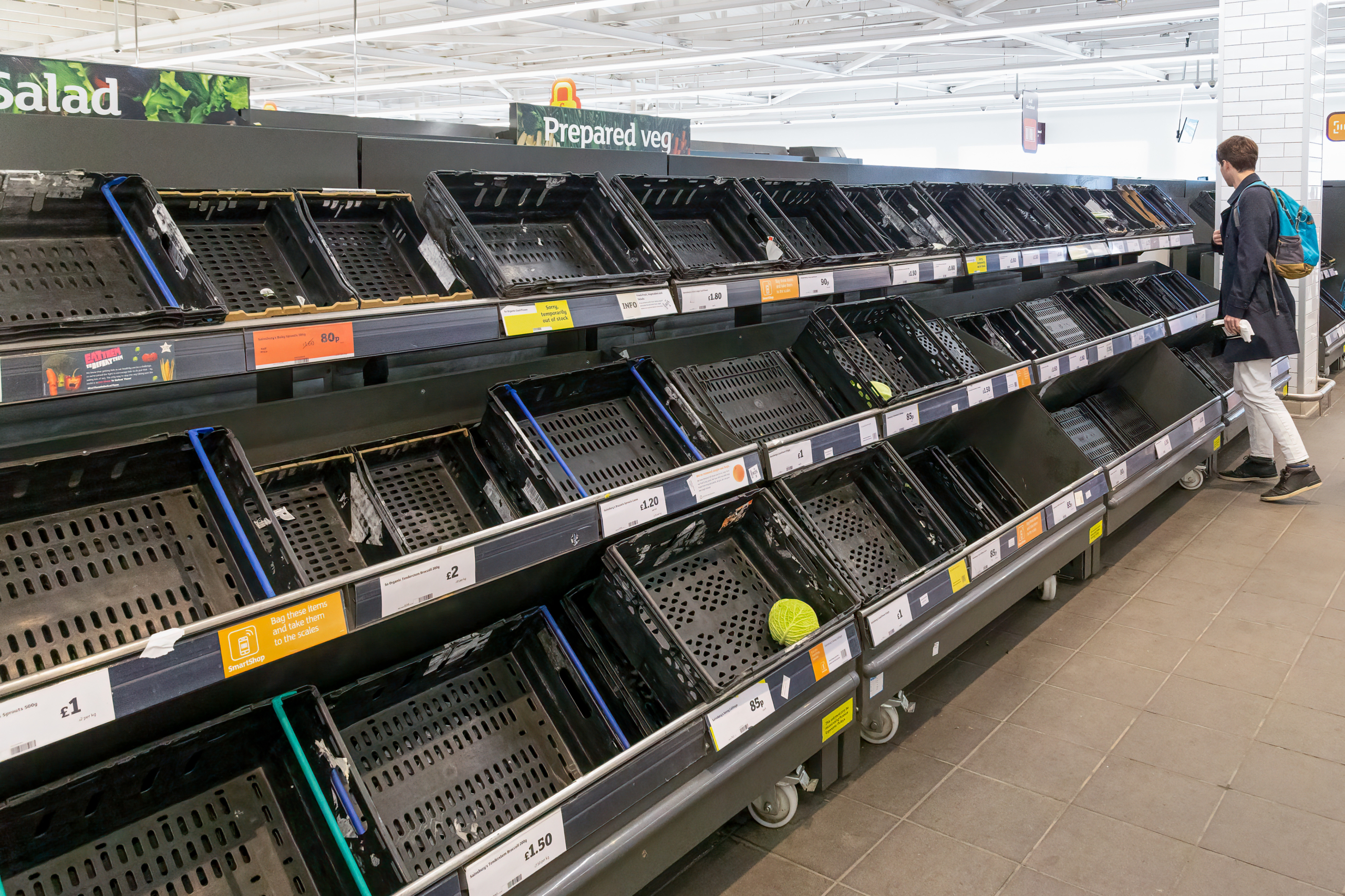Sign up for The Media Today, CJR’s daily newsletter.
As the coronavirus spreads with unsettling speed across the world, so has press coverage of hoarding. Food. Medical supplies. Toilet paper. Panicked citizens with frustratingly little control over a pandemic are instead seizing upon one thing they can do, which is stock up for what feels like an apocalypse.
News outlets can’t get enough of these stories. Local, international, tabloids, institutions, across every medium, reporters are telling consumers over and over that their neighbors are buying too much for stores to keep essentials in stock. The saturation level raises an uncomfortable question: Is our coverage part of the problem?
“Panic buying is newsworthy and should be covered,” says Jon Sawyer, executive director of the Pulitzer Center, which trains and funds journalists around the world. “What is irresponsible is ignoring the larger context and data people need to make informed decisions.”
Proving a direct relationship between news coverage of panic buying and cartfuls of nonperishables is difficult. A recent Brandwatch report attempted to do it by comparing the concentration of such reports with social media mentions of the phrase “out of stock”; the results concluded that a period of intense coverage indeed preceded a spike in posts containing the phrase. The study was far from scientific, but its conclusions were not surprising: it is plausible that if someone reads, sees, or hears that food is running out, they are more likely to shop themselves.
Some coverage is more likely to spur this behavior than others. Sensationalist angles that paint grocery stores as war zones full of crazed customers and menacing security guards are not helpful. Neither are visuals that border on disaster porn—Sawyer highlights “the endless panning of empty grocery shelves” as a particularly bad but very common tactic.
Unhelpful hysteria on the part of journalists covering a crisis is not a new phenomenon. Sawyer points to one particularly disappointing example. During the 2014 Ebola outbreak, Syracuse University’s journalism school rescinded a speaking offer to Pulitzer Prize–winning photojournalist Michel du Cille, who had been covering the crisis in Liberia.
Du Cille had no Ebola symptoms and had rigorously followed all recommended health protocols during and following his trip. But the anxiety his impending appearance stoked in students and staff won out over the facts. “A journalism school that could have made this a teaching moment instead succumbed to misinformation and fear, fueling the public hysteria that good journalism ought to combat,” Sawyer says.
READ: COVID-19 and the media’s climate coverage capabilities
Combating hysteria around food shortages depends on getting consumers out of a fear response and back into some semblance of rationality. One approach we might take is to humanize the impacts of panic buying by framing it as a community issue instead of an individual one. “Every story about panic buying should explain why hoarding is unnecessary and bad for society at large,” says Judith Matloff, a Columbia University journalism professor and author of the upcoming book How to Drag a Body and Other Safety Tips You Hope to Never Need.
Such framing is particularly relevant to the coronavirus epidemic. Showing readers that panic buying, reserved for those with enough time and money to do so, of course, can hurt their neighbors might tamp down this knee-jerk response. “I’d like to see more stories about how it hurts the poor, who don’t have the time to snake around the block at Trader Joe’s or drive to Home Depot in another suburb,” says Matloff. Reporters can also remind consumers that grocery store workers are people, too, and severely underpaid ones at that.
ICYMI: Access to public information suffers under coronavirus
Another approach is to answer the question that underlies panic buying: Is the food actually going to run out? In the current crisis the answer has so far been no. Many outlets have interviewed grocery store owners and supply chain experts as part of their coverage, balancing out fear of shortages with the reality that they are far off (and farther off yet if people buy less).
PBS NewsHour ran a long interview with a grocery trade group president last week, which Sawyer says was some of the best coverage he’s seen of panic buying in the current news cycle: “He made a compelling case that we have abundant supplies of basic groceries, and that if people would just stop panic hoarding, we’ll have plenty for all.” Under average circumstances, a spot on grocery supply chain redundancies and wholesale warehouses would be tedious. But under current ones, such boring details become a balm for terror.
It seems likely that journalists will continue to find themselves tasked with covering panic buying and other anxious responses. Not exacerbating those behaviors depends on de-emphasizing fear and providing context that ties the issue into much larger ones. “Panic buying is universal in crises,” says Matloff, whose reporting career included thirty years as a war correspondent. “I saw it during wartime in Africa and during the financial collapse of Russia in 1998. The only difference is that some people can only afford one modest bag of rice at the bodega, while others nab hundreds of dollars’ worth of Manchego and lamb at Fairway.”
Has America ever needed a media defender more than now? Help us by joining CJR today.



